
Journalists from the investigative team in Iceland that released the now-infamous US military video on WikiLeaks traveled to Baghdad recently to meet with the family members of some of the twelve people killed in the 2007 attack. Ahlam Abdelhussain, the widow of Saleh Mutashar who was killed when the gunship opened fire on a van, asks, “Why was he shot with his children in the car? They did nothing wrong. He was helping a journalist. What was his crime? What was the crime of our children who are left with no father and no support?” We play excerpts. [includes rush transcript]
Transcript
JUAN GONZALEZ: We begin today with an update on the video released last week by WikiLeaks that depicts US troops killing twelve people, including two Reuters employees, and injuring at least two children in a suburb of Baghdad nearly three years ago. Defense Secretary Robert Gates told ABC’s This Week that the video, quote, “doesn’t show the broader picture of the firing that was going on at American troops.” He acknowledged that the video was “unfortunate” and “painful” but added that the incident had already been thoroughly investigated and the video, quote, “should not have any lasting consequences.”
Here’s an excerpt from that US military video released by WikiLeaks. This is the moment that US forces first open fire from a helicopter.
US SOLDIER 5: …there, one o’clock. Haven’t seen anything since then.
US SOLDIER 2: Just [expletive]. Once you get on, just open up.
US SOLDIER 1: I am.
US SOLDIER 4: I see your element, got about four Humvees, out along this —
US SOLDIER 2: You’re clear.
US SOLDIER 1: Alright, firing.
US SOLDIER 4: Let me know when you’ve got them.
US SOLDIER 2: Let’s shoot. Light ’em all up.
US SOLDIER 1: Come on, fire!
US SOLDIER 2: Keep shootin’. Keep shootin’. Keep shootin’. Keep shootin’.
US SOLDIER 6: Hotel, Bushmaster two-six, Bushmaster two-six, we need to move, time now!
US SOLDIER 2: Alright, we just engaged all eight individuals.
JUAN GONZALEZ: The video shows US forces watching as a van pulls up to evacuate the wounded. They again open fire from the helicopter, killing several more people and wounding two children inside the van.
US SOLDIER 1: Where’s that van at?
US SOLDIER 2: Right down there by the bodies.
US SOLDIER 1: OK, yeah.
US SOLDIER 2: Bushmaster, Crazy Horse. We have individuals going to the scene, looks like possibly picking up bodies and weapons.
US SOLDIER 1: Let me engage. Can I shoot?
US SOLDIER 2: Roger. Break. Crazy Horse one-eight, request permission to engage.
US SOLDIER 3: Picking up the wounded?
US SOLDIER 1: Yeah, we’re trying to get permission to engage. Come on, let us shoot!
US SOLDIER 2: Bushmaster, Crazy Horse one-eight.
US SOLDIER 1: They’re taking him.
US SOLDIER 2: Bushmaster, Crazy Horse one-eight.
US SOLDIER 4: This is Bushmaster seven, go ahead.
US SOLDIER 2: Roger. We have a black SUV —- or Bongo truck picking up the bodies. Request permission to engage.
US SOLDIER 4: Bushmaster seven, roger. This is Bushmaster seven, roger. Engage.
US SOLDIER 2: One-eight, engage. Clear.
US SOLDIER 1: Come on!
US SOLDIER 2: Clear. Clear.
US SOLDIER 1: We’re engaging.
US SOLDIER 2: Coming around. Clear.
US SOLDIER 1: Roger. Trying to -—
US SOLDIER 2: Clear.
US SOLDIER 1: I hear ’em — I lost ’em in the dust.
US SOLDIER 3: I got ’em.
US SOLDIER 2: Should have a van in the middle of the road with about twelve to fifteen bodies.
US SOLDIER 1: Oh yeah, look at that. Right through the windshield! Ha ha!
JUAN GONZALEZ: Saleh Mutashar is the man who was driving that van. He was taking his two children, age nine and six at the time, to school.
Well, earlier this month, journalists from the Icelandic National Broadcasting Service, who were part of the investigative team that released the US military video on WikiLeaks, visited the family of Saleh Mutashar, the driver of the van and the father of the two children. They showed his family the recently released video footage of the attack on the van that led to his death, and then spoke to his son Sajad, his nephew Anwar, and his widow Ahlam Abdelhussain.
AHLAM ABDELHUSSAIN: [translated] My husband did nothing wrong. He saved a wounded person and had his children with him in the car. How do I feel? What can I say? Why was he shot with his children in the car? They did nothing wrong. He was helping a journalist. What was his crime? What was the crime of our children who are left with no father and no support?
ANWAR: [translated] He was carrying wounded people during the American attacks. He was trying to help. They believe that someone who was carrying a gun will take his children along with him? Unbelievable. What can we do? God take revenge from the Americans. They destroyed us and destroyed our nations. What is the future of those children? They are orphans.
SAJAD MUTASHAR: [translated] I want to get our rights from the Americans who harmed us.
AMY GOODMAN: That was twelve-year-old Sajad Mutashar, injured in the July 2007 Apache helicopter attack on the Iraqi civilians, reacting to the video of the attack released by WikiLeaks. The boy’s mother says she has yet to receive compensation from the US military for the death of her husband or the injuries to her two children. She described the hardship she’s had to suffer since her husband was killed in July 2007.
AHLAM ABDELHUSSAIN: [translated] We used to live in a rented house. He worked as a construction worker. We didn’t have any other income. After his death, I was left with nothing. My children were wounded. We were devastated. My father-in-law took us to live with him. Life became very difficult. My children are still suffering from their wounds. My daughter still suffers from pain in her head and her stomach. My son is still in pain after his surgery. We don’t have a pension or any other income to rely on, so my father-in-law took us to live with him.
AMY GOODMAN: The attack also killed two Reuters employees: the photographer Namir Noor-Eldeen and his driver, a father of four, Saeed Chmagh.

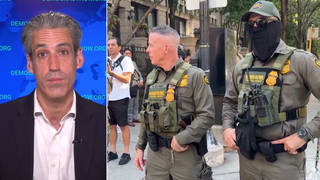
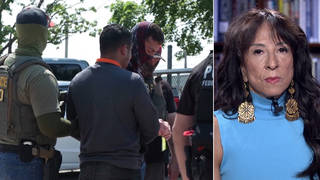
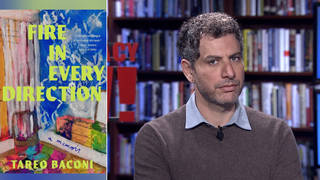
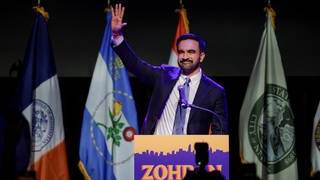






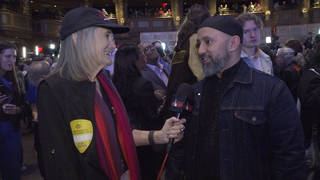
Media Options